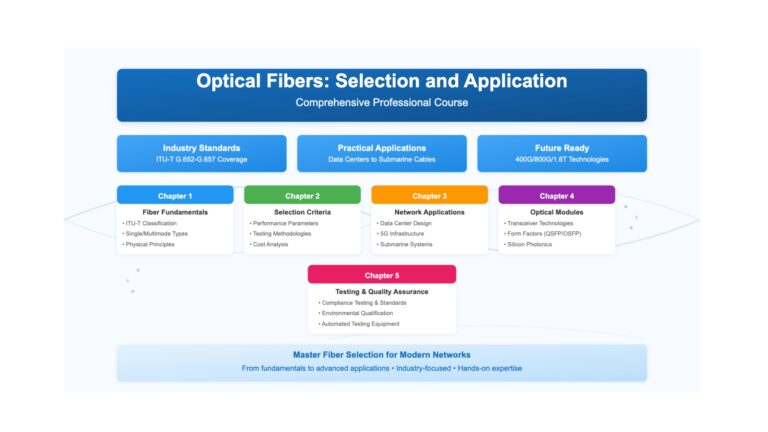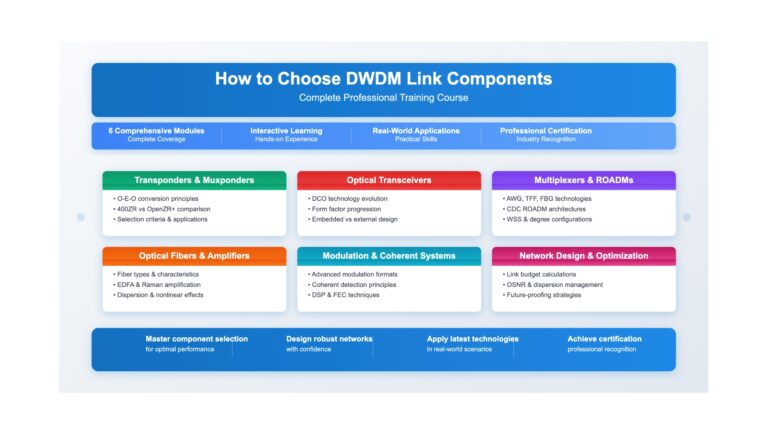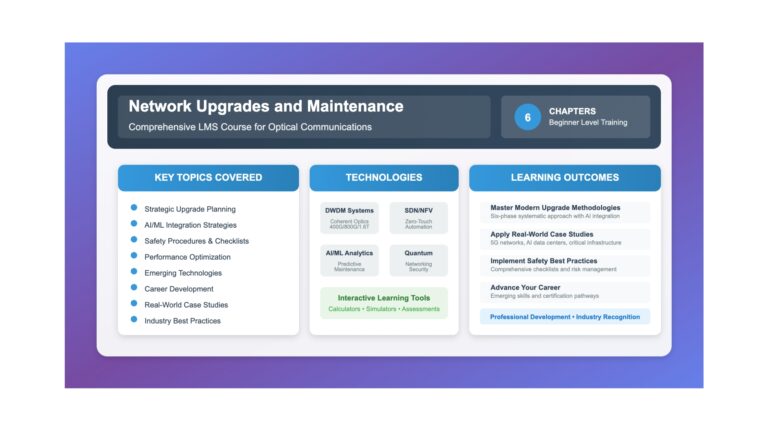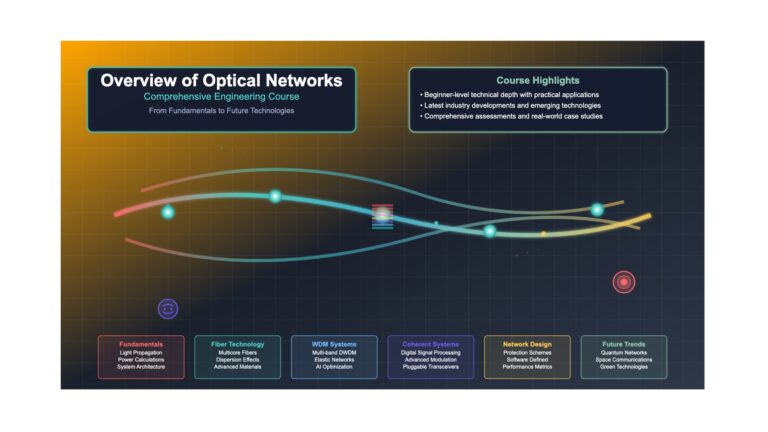Description
Curriculum
Instructor
Learning Objectives
- Define Software-Defined Networking and explain its fundamental principles
- Analyze the architectural differences between traditional and software-defined networks
- Evaluate the business drivers and technical motivations for SDN adoption
- Examine the separation of control and data planes in network architecture
- Assess current market trends and future directions in SDN technology
Curriculum
- 6 Sections
- 53 Lessons
- 10 Weeks
Expand all sectionsCollapse all sections
- Chapter 1: SDN Foundations9
- 1.11.1 Introduction: The Network Paradigm Shift
- 1.21.2 Defining Software-Defined Networking
- 1.31.3 Traditional Network Architecture Limitations
- 1.41.4 SDN Architecture Fundamentals
- 1.51.5 Mathematical Foundation: Control vs. Data Plane Separation
- 1.61.6 Business Drivers for SDN Adoption
- 1.71.7 Current Market Trends and Future Directions
- 1.81.8 Chapter Summary
- 1.9Knowledge Check
- Chapter 2: SDN Architecture & Protocols8
- Chapter 3: SDN Standards & Frameworks9
- 3.13.1 SDN Standardization Landscape
- 3.23.2 SDN Standardization Roadmap
- 3.33.3 Major SDN Framework Analysis
- 3.43.4 Transport Network Control Architectures
- 3.53.5 Packet-Optical Integration Standards
- 3.63.6 Future Standardization Directions
- 3.73.7 Interoperability and Certification
- 3.83.8 Chapter Summary
- 3.9Knowledge Check
- Chapter 4: NFV & Cloud Integration8
- 4.14.1 Network Function Virtualization Fundamentals
- 4.24.2 SDN and NFV Integration
- 4.34.3 Edge Computing and Network Integration
- 4.44.4 Cloud-Native Networking
- 4.54.5 Performance Considerations in Virtualized Networks
- 4.64.6 Future Trends: Edge-Native and Cloud-Native Convergence
- 4.74.7 Chapter Summary
- 4.8Knowledge Check
- Chapter 5: Transport Networks & MPLS-TP9
- 5.15.1 Transport Network Evolution and SDN Integration
- 5.25.2 MPLS-TP: The Transport Profile
- 5.35.3 Multi-Service Broadband Packet Networking
- 5.45.4 Packet-Optical Integration and Convergence
- 5.55.5 SDN-Enabled Transport Network Control
- 5.65.6 Performance Analysis and Optimization
- 5.75.7 Future Evolution: Intent-Based Transport Networks
- 5.85.8 Chapter Summary
- 5.9Knowledge Check
- Chapter 6: Implementation & Case Studies10
- 6.16.1 SDN Implementation Strategy Framework
- 6.26.2 Enterprise Data Center Case Study
- 6.36.3 Service Provider Transport Network Case Study
- 6.46.4 Cloud Service Provider Case Study
- 6.56.5 Testing and Validation Methodologies
- 6.66.6 Risk Management and Mitigation Strategies
- 6.76.7 Success Metrics and ROI Measurement
- 6.86.8 Future Trends and Emerging Technologies
- 6.96.9 Chapter Summary
- 6.10Final Course Assessment
Admin

29 Students36 Courses

Free
0 student
53 lessons
Language: English
0 quiz
Assessments: Yes
Skill level All levels
Courses you might be interested in
Fiber Optics & Components
Learning Objectives Understand the fundamental principles of optical fiber communication and light propagation Classify different types of optical fibers based on ITU-T standards and industry specifications Analyze the key physical...
-
41 Lessons
Free
DWDM Technology
Learning Objectives Understand the fundamental principles of Dense Wavelength Division Multiplexing (DWDM) Analyze the role and functionality of transponders in DWDM networks Compare different transponder types and their applications Evaluate...
-
49 Lessons
Free
Network Automation
Learning Objectives Understand the fundamental principles and drivers of network upgrades in modern optical communications Analyze capacity requirements, technology advancements, and cost-benefit considerations for upgrade decisions Evaluate compatibility, interoperability, and...
-
47 Lessons
Free
DWDM Technology
Learning Objectives Understand the fundamental principles of optical communication and light propagation Analyze the electromagnetic spectrum and optical window characteristics for fiber transmission Compare optical communication advantages over traditional electrical...
-
61 Lessons
Free





